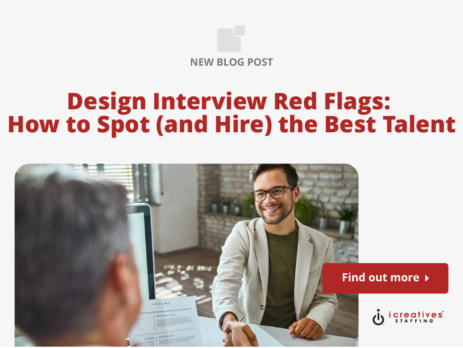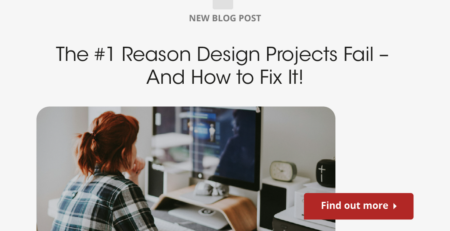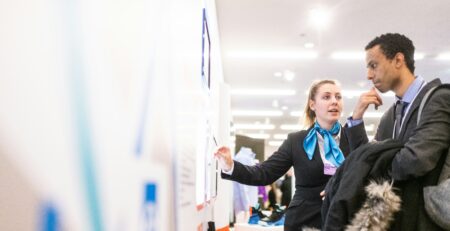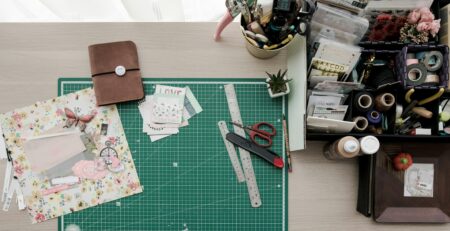Design Interview Red Flags: How to Spot (and Hire) the Best Talent
Hiring the right design talent is crucial for the success of any creative project or organization. The interview process is a pivotal moment to assess not only a candidate’s skills and experience but also their fit within the team and the company culture. However, certain red flags during design interviews can indicate potential problems that might hinder a candidate’s effectiveness if hired. Recognizing these red flags early can save companies from costly hiring mistakes and ensure that they select the most suitable candidates for their teams.
Design interviews are unique because they not only evaluate technical skills and knowledge but also creativity, problem-solving abilities, and interpersonal skills. A candidate’s portfolio might showcase exceptional talent, but how they behave and respond during an interview can reveal much more about their potential as a team member. Therefore, it is essential to approach design interviews with a keen eye on both the apparent strengths and the subtle warning signs.
Some common red flags include a lack of understanding of basic design principles, inability to articulate thought processes behind design choices, and poor cultural fit with the company. Additionally, overemphasis on particular aspects of design without acknowledging the importance of others, such as focusing solely on aesthetics without considering usability, can also be a warning sign. These indicators can help interviewers gauge not just competence but also compatibility and potential for growth within the company.
Moreover, the dynamics of the design industry keep evolving, and staying updated with the latest design trends, tools, and methodologies is crucial. A candidate’s willingness to learn and adapt is as important as their current skill set. Thus, an interview should also assess adaptability and eagerness to grow professionally.
This guide will delve into the most asked questions about spotting red flags in design interviews and provide insights on how to effectively identify and hire the best design talent. By understanding these dynamics, companies can refine their hiring processes to build more innovative, resilient, and cohesive teams.
Most Asked Questions About Design Interview Red Flags
- What are common red flags to look for in design interviews?
- How can you assess a candidate’s problem-solving skills in a design interview?
- What does an inability to explain design choices say about a candidate?
- How important is cultural fit in a design interview, and how can it be assessed?
- What are the implications of not recognizing red flags in design interviews?
What Are Common Red Flags to Look for in Design Interviews?
Identifying red flags during design interviews is crucial to ensure that you are hiring a candidate who will not only perform well but also integrate seamlessly into your team. Common red flags include a lack of detailed knowledge about previous projects, inability to critique their own work, poor communication skills, and a mismatch between the portfolio and interview performance.
Firstly, a candidate’s inability to provide detailed insights into their previous projects can be a significant red flag. It might indicate that they were not deeply involved in the projects they claim to have worked on. Interviewers should probe into specific roles and contributions to assess the depth of involvement and understanding.
Another red flag is when candidates show no ability to critique their own work. This may suggest a lack of critical thinking and an inability to use feedback constructively. Asking candidates what they would have done differently or what they learned from past projects can provide insights into their self-assessment capabilities.
Poor communication skills, especially in explaining design concepts and decisions, can also be a red flag. Designers must often advocate for their design choices and explain complex ideas to stakeholders. Inability in this area can hinder a team’s workflow and collaboration.
Lastly, a discrepancy between a candidate’s portfolio and their ability to discuss those projects can indicate exaggeration of skills or experience. It’s crucial to ask detailed questions about the projects displayed in the portfolio to ensure the candidate’s actual involvement and understanding.
How Can You Assess a Candidate’s Problem-Solving Skills in a Design Interview?
Assessing a candidate’s problem-solving skills during a design interview is essential as it directly relates to their ability to handle real-world challenges they will face in the role. To evaluate these skills effectively, interviewers can use a combination of portfolio reviews, behavioral questions, and design exercises.
A thorough review of the candidate’s portfolio should be the first step. Look for projects that showcase the candidate’s ability to overcome design challenges. Discuss these projects during the interview to understand the thought process and problem-solving methods used.
Behavioral questions are also effective in assessing problem-solving skills. Questions like “Can you describe a challenging project and how you handled it?” or “How do you approach a design problem with multiple possible solutions?” can reveal much about a candidate’s approach to problem-solving.
Additionally, practical design exercises can be a direct method to see a candidate’s problem-solving skills in action. These exercises should be relevant to the daily tasks the candidate would perform if hired. Observing how they approach a problem, their creativity, and their reasoning during these exercises can provide deep insights into their capabilities.
What Does an Inability to Explain Design Choices Say About a Candidate?
An inability to explain design choices during an interview can be a significant red flag. It often indicates a superficial understanding of design principles and a lack of depth in their design process. This limitation can be problematic as designers must often justify their choices to stakeholders and collaborate with team members.
When a candidate struggles to articulate why they made specific design decisions, it may suggest that their decisions were not based on strategic thinking or user-centered principles. This lack of explanation can lead to designs that are not aligned with business goals or user needs, which is detrimental to the overall project success.
Interviewers should probe deeper if a candidate cannot explain their design choices effectively. Asking follow-up questions or requesting examples of how their designs have met user or business requirements can provide further clarity on their capability and understanding.
How Important Is Cultural Fit in a Design Interview, and How Can It Be Assessed?
Cultural fit is crucial in a design interview because it significantly affects a candidate’s ability to collaborate with others and thrive within the company’s environment. Assessing cultural fit involves understanding the candidate’s values, work style, and interpersonal skills, and how these align with the company’s culture.
To assess cultural fit, interviewers can ask questions about the candidate’s preferred work environment, their expectations from a team, and how they handle conflict. Observing how candidates interact with staff during the interview process can also provide insights into their interpersonal skills and adaptability.
Additionally, discussing the company’s values and observing the candidate’s response can also be telling. Candidates who show enthusiasm and interest in these values are likely to be a better cultural fit than those who seem indifferent or misaligned with the core values of the company.
What Are the Implications of Not Recognizing Red Flags in Design Interviews?
Not recognizing red flags during design interviews can lead to several negative outcomes, including poor job performance, decreased team morale, and increased turnover. Hiring a candidate who is not a good fit for the role or the company can disrupt team dynamics and lead to conflicts, which can affect overall productivity and creativity.
Poor hires can also lead to increased costs associated with training and potentially re-hiring if the candidate does not work out. Furthermore, a bad hiring decision can damage a company’s reputation if it leads to subpar design outputs or project failures.
Therefore, it is crucial for interviewers to be vigilant about spotting red flags during the interview process. This vigilance helps ensure that only candidates who are truly suitable for the role and the company’s culture are selected, thereby supporting the company’s long-term success and stability.
Conclusion
Effectively spotting and interpreting red flags in design interviews is essential for hiring the best talent. By understanding common warning signs and assessing candidates’ problem-solving abilities, communication skills, and cultural fit, companies can make informed hiring decisions that contribute to their success and innovation. Recognizing these red flags not only prevents costly hiring mistakes but also ensures that the team remains dynamic, cohesive, and creatively productive.
For further insights into hiring and managing creative talent, consider exploring additional resources such as the best prototyping tools for UX/UI designers or expected salaries for UX/UI designers.
In conclusion, while the interview process can be complex, understanding and addressing red flags effectively is crucial for building a strong, innovative, and harmonious design team.
In today’s competitive market, finding the right creative and marketing expert can be a challenge. But with icreatives, you’re in experienced hands. With 37 years in staffing and a track record of matching more than 10,000 employees to over 1,000 companies worldwide, we know how to connect you with the best. Plus, you only pay if you hire—there’s no risk, only results. Ready to find your perfect creative or marketing expert? HIRE WITH ICREATIVES today!












